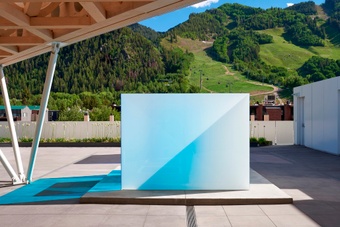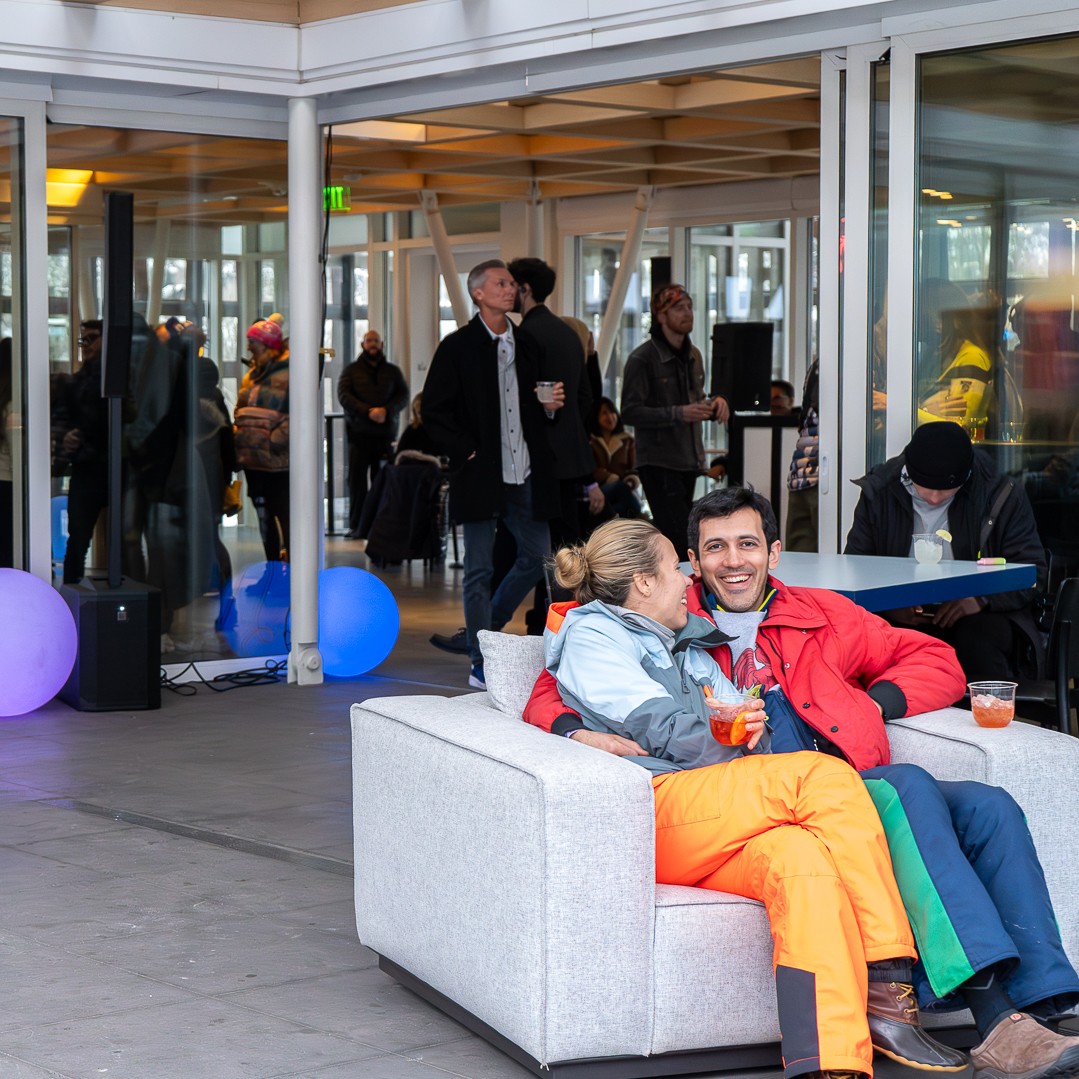Aspen Art Museum
- Join us on May 15 for engaging presentations by our esteemed 2024 Artist Fellowship recipients!
- Categories
- All events
- Talks and Lectures
- Member Events

- For more information on how you can join the AAM, please visit the Street Level Visitor Information Desk, inquire in the Shop, or call 970.925.8050.

- The Rooftop Café is committed to sharing real farm-to-fork experiences with the Roaring Fork Valley. Visit us today!

- Aspen Art Museum is an artist-founded institution dedicated to supporting artists in the development of bold ideas to shape our museum and the field of art today.
Artists
For Restless Empathy, the Aspen Art Museum invited eight artists—Allora & Calzadilla, Paweł Althamer, Marc Bijl, Lara Favaretto, Geof Oppenheimer, Lars Ø. Ramberg, Frances Stark, and Mark Wallinger—to create new projects or rethink existing bodies of work throughout the museum and the town of Aspen. While representing a wide range of practices and frames of reference, these artists share a capacity for creating and exploring empathy in unexpected ways. Bringing together artists who approach the idea of the poetic, either through material, language, or gesture, Restless Empathy examined the complex process of entering the interior world of another—whether artist, viewer, or object—and seeking to make a connection.
The notion of the viewer “completing” a work of art usually involves a demand placed upon the audience. In the case of artworks that are grouped under the term Relational Aesthetics, the viewer becomes instrumental within the work itself. Rather than use people as a medium, however, the artists in Restless Empathy made markedly generous gestures toward the public, creating a space for unexpected experience through work characterized by a deep sincerity and moments of intimate surprise.
Restlessness is having an uneasy, unsettled heart, mind, or physical body. Empathy is having an understanding of the emotions of another. To be empathetic is to wander amongst the feelings of others and alternately reflect upon one’s own emotions. Restless empathy allows commonalities and differences among people to be highlighted through an interaction with situations or objects. Much like restlessness is difficult to control, empathy cannot be dictated. These open-ended interactions are the goal of the Restless Empathy exhibition. They are nonbiased, nonprescribed, nonmandatory—yet filled with opportunity.
Reflective of Aspen Art Museum’s commitment to presenting art in unexpected places Restless Empathy challenged expectations of permanence and monumentality in art that addressed the public while in no way was an exhibition of “public art” in a thematic sense. Rather, Restless Empathy broadly explored relationships between aesthetics, space, locality, and modes of address.
Allora & Calzadilla created a new version of their Hope Hippo (only exhibited once previously at the 51st Venice Biennale in 2005) made from local materials. Someone was seated atop the hippo at all times, reading a newspaper. They were also supplied with a whistle, which they blew each time they came across a story that they felt exposes or illuminates an injustice.
Paweł Althamer’s sculpture Guma (2008) comes out of his experience teaching “Einstein Seminars,” physics classes the artist taught for underprivileged youth in his hometown in Poland. The figure depicted in the sculpture is the so-called “town drunk,” who was often a fixture outside the classroom and occasionally participated—becoming an unofficial mascot for class attendees. When the man died, Althamer created the sculpture as a nontraditional memorial—highlighting the processes by which we remember or eulogize the departed.
Marc Bijl’s project involved two identical sculptural interventions, one placed on the grounds of the Aspen Art Museum and one on the campus of the Aspen Institute. For both, Bijl constructed a six-foot-square corrugated aluminum fence on which the Albert Schweitzer quote, “As soon as man does not take his actions for granted, but beholds it as something unfathomably mysterious, thought begins,” was spray-painted. Schweitzer’s only visit to the United States took place in July 1949 when he was featured as a guest speaker at the “Goethe Bicentennial Celebration” in Aspen. This event began the tradition of gathering great thinkers (as well as great musicians) together in Aspen, and directly resulted in both the founding of the Aspen Music Festival and the Aspen Institute. Bijl’s choice related to Schweitzer’s empathetic understanding of philosophy. Rather than viewing philosophy as elitist and removed, Bijl’s work proposed that the practice is accessible and immediate. For him, the quote referred to the idea that very big ideas begin with very small and basic ones, and are then expanded. It is this search for truth that unites us as humans.
Lara Favaretto exhibited a canvas-covered, self-propelled merry-go-round. The merry-go-round is accepted as a symbol of youthful fun. Entitled Cominció ch’era Finite (It Began When It Was Over) (2006), Favaretto’s version spun so rapidly that it appeared out of control, causing the canvas flaps installed around its sides to repeatedly and disquietingly strike a column erected within the exhibition space. Favaretto’s piece plays on the excitement one feels in seeing an active object in the gallery, the dismay one feels in not being able to participate with it as originally hoped, and the subsequent, yet altered, interest one experiences as a result of the interaction with the piece.
Geof Oppenheimer presented two newly commissioned works. The first, Public Address (2010), was a series of eight slipcast ceramic microphones on stands, recalling those typically found in press conferences and on speaker podiums. By casting the microphones in ceramic they become formally elegant, but ultimately nonfunctional, underscoring the finely crafted, but hollow, conditions that now surround public discourse. The second work, The Morally Ambiguous Precedent of Abstraction, Police press conference Chicago Illinois 2008 (2009), is a large photographic abstraction created from an image of a stage curtain from a Chicago Police press conference.
Lars Ø. Ramberg’s project utilized the late journalist Hunter S. Thompson as a platform for addressing the concept of empathy. Thompson was a longtime Aspen resident who ran for Sheriff in 1970. He committed suicide at his home in nearby Woody Creek in 2005. Ramberg created memorial benches for Thompson based on the standardized memorial benches commonplace throughout town. The benches were installed throughout Aspen, each including quotes from Thompson that add up to a larger text characteristic of what Ramberg terms Thompson’s “warm anarchism,” ultimately upending the sentimentality associated with memorializing.
Frances Stark’s project for Restless Empathy revolved around an Aspen-based musical comedy of 1951, I’ve Had It!, which was originally performed at the Wheeler Opera House. The musical is about people who work in the service industry in Aspen and pokes fun at the more cultured audience of the music festival. In I’ve Had It!, a bellhop’s potential bride gets a job working for a composer who has received a Guggenheim fellowship to compose a divertimento to be performed at the festival. She falls for the composer, annoying the bellhop, and with the help of his bartender friend, exposes the pretentious composer/girl-stealer as a fraud, when the bartender, bellhop, and some bar musicians demonstrate in front of a room full of important critics that the divertimento is really a hit-parade song played backwards. Stark’s project was not a simple restaging of the play, but a performance that engaged I’ve Had It! as a regional historical reference while, at the same time, formally playing with some of the symmetrical tropes and tensions built into the premise of the musical. For the performance, Stark incorporated a Haydn divertimento written for two trios to play simultaneously.
Mark Wallinger presented a site-specific artwork featuring a photo-mural of the ubiquitous Aspen Mountain landscape over which the text “AMERIKA” is superimposed. The work recalls the famous “HOLLYWOOD” sign in Los Angeles’s Hollywood Hills, as well as referencing Walter Paepcke’s “body, mind, spirit” inspiration and Goethe and his 1827 poem AMERIKA—penned in the shadow of the US’s adoption of the Monroe Doctrine (1823). In AMERIKA, Goethe envisions a young nation possessing the potential of unfettered existence in relation to a Europe consumed with historical, political, and cultural determinism, and mired in notions of autocratic power. Goethe’s AMERIKA, translated into English, reads:
America, you’ve got it better Than our old continent. Exult! You have no decaying castles And no basalt. Your heart is not troubled, In lively pursuits, By useless old remembrance And empty disputes So use the present day with luck! And when your child a poem writes, Protect him, with his skill and pluck, From tales of bandits, ghosts, and knights.
AMERIKA was also the title given to Franz Kafka’s unfinished novel by friend, editor, and literary executor Max Brod, who assembled the author’s incomplete manuscript and published it the year after Kafka’s death in 1926. The book’s genesis was the short story (and the book’s first chapter) entitled The Stoker, which tells the story of a young European man’s forced emigration to the US following a paternity scandal.
The exhibition was jointly organized by Heidi Zuckerman, AAM Director and Chief Curator, and Matthew Thompson, AAM Associate Curator, and was accompanied by a fully illustrated hardbound catalogue including texts by the Museum of Modern Art’s Harvey S. Shipley Associate Curator of Drawings, Christian Rattemeyer, and Renaissance Society at the University of Chicago’s Director of Education Hamza Walker.
Works from the Exhibition
free courtesy
Amy & John Phelan
- Aspen Art Museum
- 637 East Hyman Avenue
- Aspen, Colorado 81611
- t: 970.925.8050
- f: 970.925.8054
- info@aspenartmuseum.org
| Hours |
|
Tuesday–Sunday, 10 AM–6 PM
Closed Mondays
|
© 2024 Aspen Art Museum
General operating support is provided by Colorado Creative Industries. CCI and its activities are made possible through an annual appropriation from the Colorado General Assembly and federal funds from the National Endowment for the Arts.



General operating support is provided by Colorado Creative Industries. CCI and its activities are made possible through an annual appropriation from the Colorado General Assembly and federal funds from the National Endowment for the Arts.



































